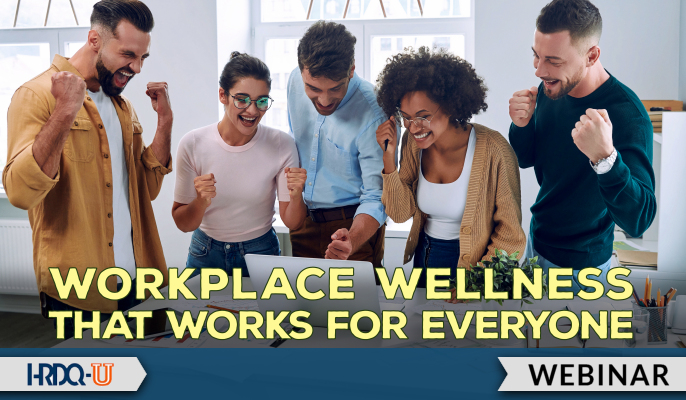- 827 Lincoln Ave. #B-10 West Chester, PA 19380
- support@hrdq.com
- +1-610-279-2002
Quick Links
Menu
Featured Topics
Menu
Total Results
We could not find what you're looking for. Please try again.No Record Found

Today’s workplaces are full of cynicism, paranoia, and burnout. But the best organizations foster hope, trust, compassion, and cooperation because their leaders build a culture where employees can thrive. When it comes to creating a healthier, higher-performing organization, it’s no surprise that culture is the thing that matters most. When carefully designed, culture is the difference between success and failure, engagement and alienation, health and sickness, joy and drudgery. But here’s the deal, very few leaders know how to design a culture that works in the “next normal.”
This highly interactive, intensive workshop provides a fresh perspective on how to promote employee well-being in the workplace. It provides all professionals with tangible tools and immediate takeaways needed to start making a difference in employees’ health and happiness and promoting an overall culture of well-being throughout an organization.
Participants will come away with concrete, actionable takeaways for tackling the massive obstacle of behavioral change and will learn how to design and implement an approach that can most benefit themselves and the organization.


Devin C. Hughes is an author, speaker, consultant, executive coach, and internationally recognized expert in the science of happiness, organizational/culture change, and leadership development. He has lectured and worked with a variety of Fortune 100 companies, as well as the Secret Service, the IRS, and an assortment of profit and nonprofit organizations. Devin is the author of 20 books and has lectured in more than 15 countries. He lives in San Diego, California, with his wife, four daughters, and two rescue dogs.
Connect with Devin on Facebook, Twitter, Instagram, and at www.devinchughes.com.
Training Tools for Developing Great People Skills
This event is sponsored by HRDQ. For 45 years HRDQ has provided research-based, off-the-shelf soft-skills training resources for classroom, virtual, and online training. From assessments and workshops to experiential hands-on games, HRDQ helps organizations improve performance, increase job satisfaction, and more.
Learn more at HRDQstore.com
“I really enjoyed the content! I think webinars like this should be a must for everyone.”
– Tracy C.
“Great interaction and engagement with the audience and key takeaways for easy implementation into your professional and personal life!”
– Monique F.
“This webinar was VERY relatable and encouraging! Thank you!!!”
– Roberta B.

Sign up to be notified of upcoming live webinars, in-depth workshops, podcasts, blog posts, promotions and much more. Stay ahead of the curve and subscribe for FREE today!